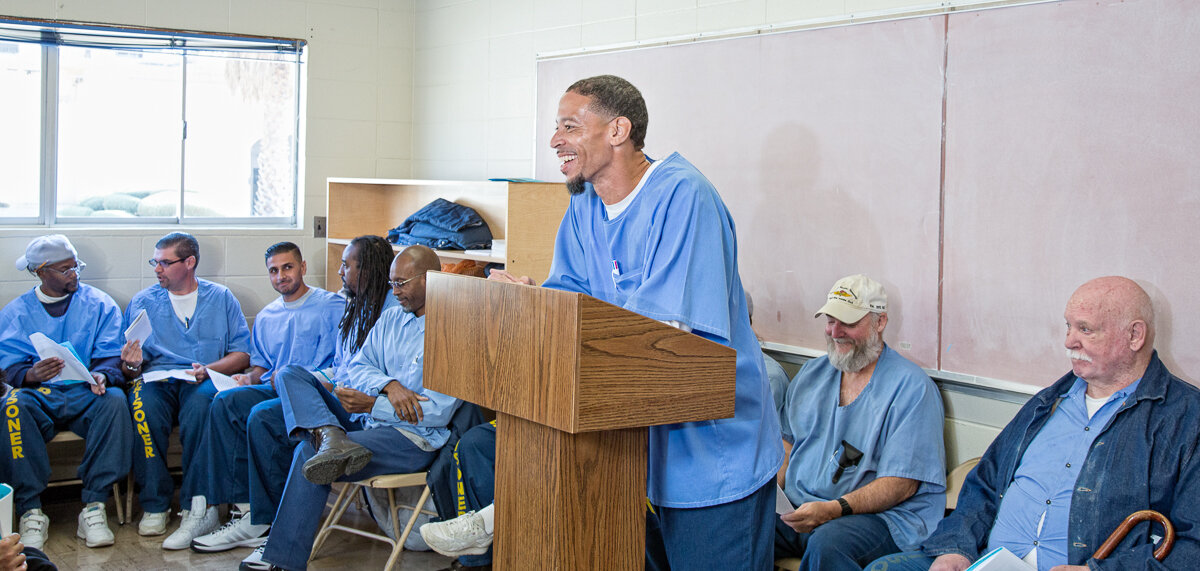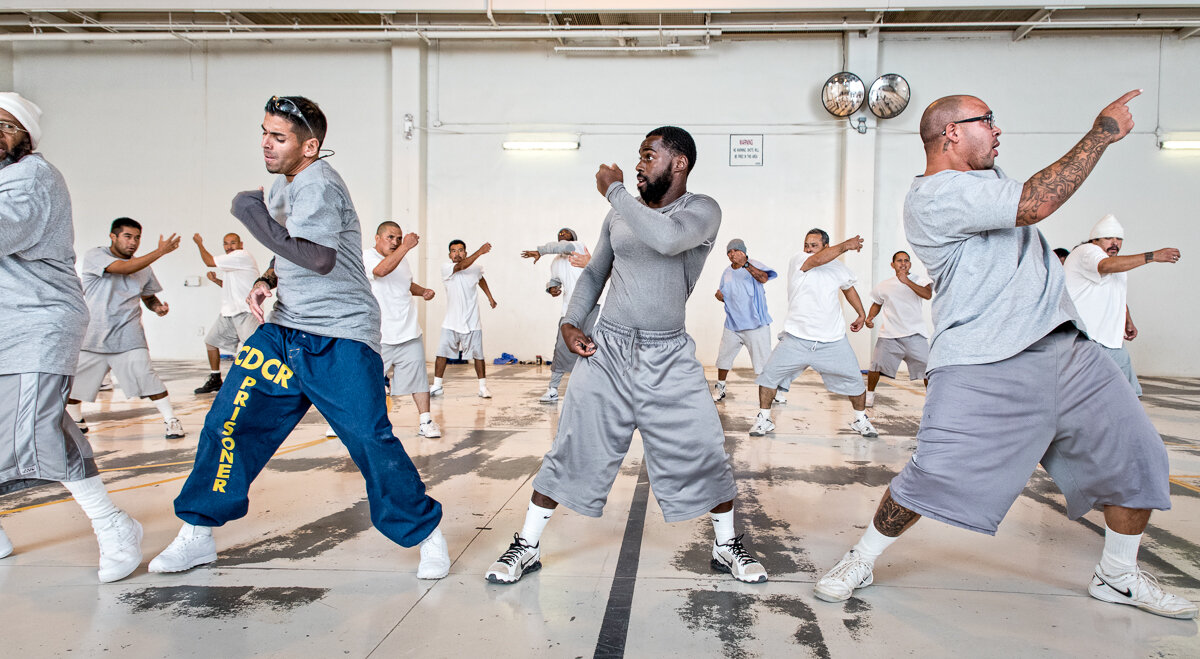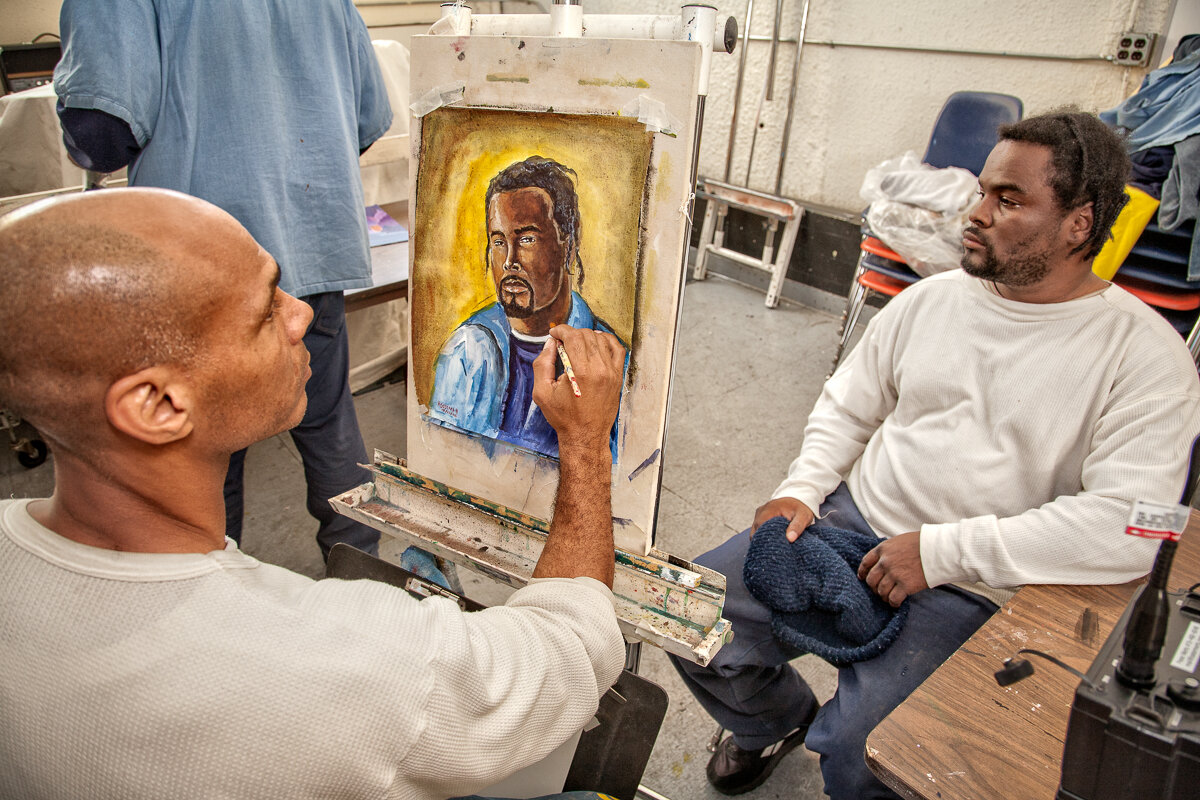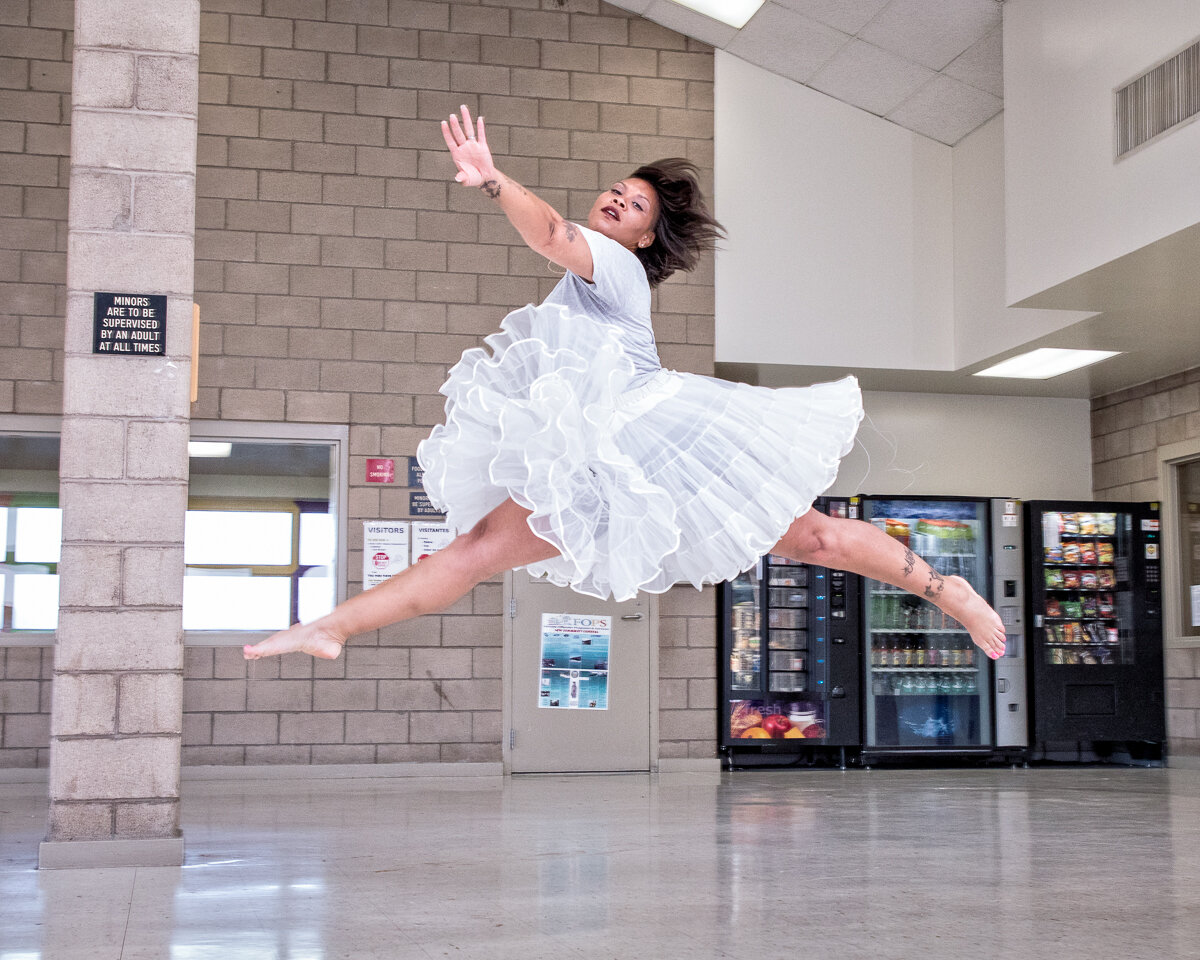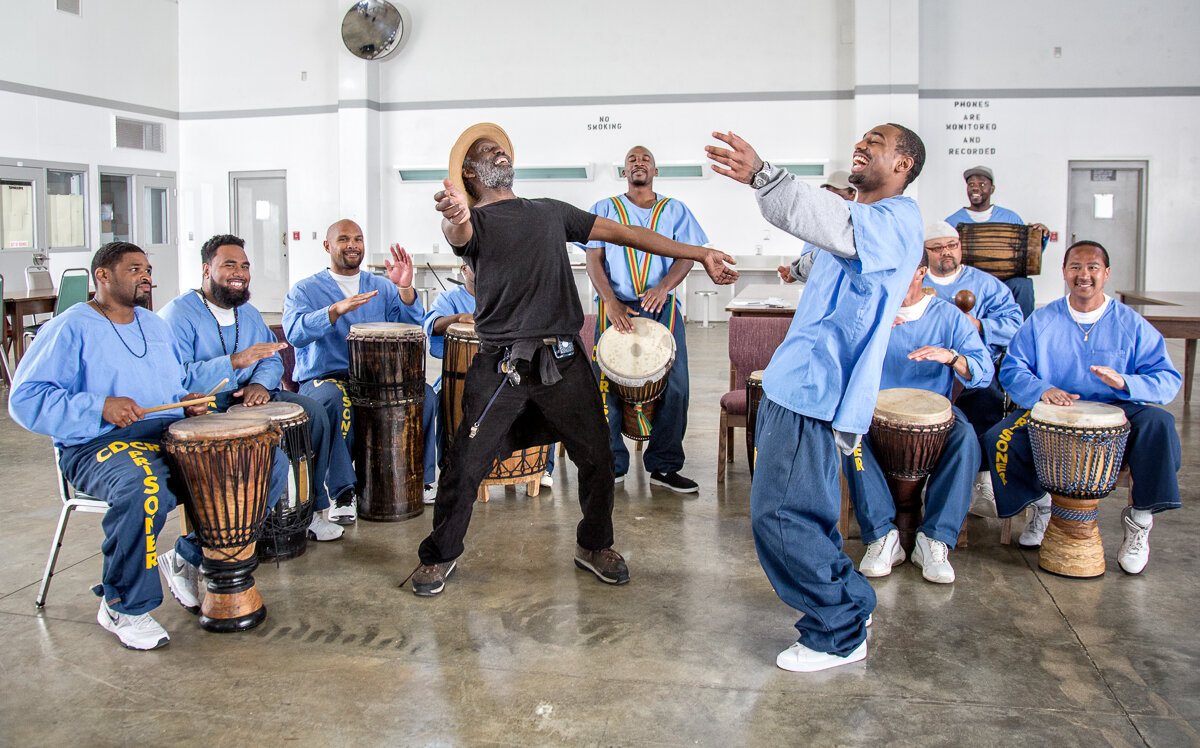Gallery: Art programs in California prisons
Peter Merts has been documenting art programs in California prisons for 15 years and has photographed in all 36 California adult state prisons. The largest art program in California prisons is Transformative Arts, which is funded by the California Department of Corrections and Rehabilitation, administered by the California Arts Council and executed by local arts councils and nonprofits across the state. All in-person classes were suspended during the pandemic, and have not resumed. To learn more about his work, visit PeterMerts.com.
People are hungry to hear the perspectives of incarcerated people.
When “Ear Hustle,” a podcast created at California’s San Quentin State Prison, launched its first episode called “Cellies,” the expectation was about 50,000 downloads. “Cellies” reached over three million listeners and the podcast later received a Pulitzer Prize nomination and won the Dupont Award in 2020. The latest podcast from San Quentin, “UnCuffed” (produced by incarcerated men trained in audio journalism by KALW Radio), won two community journalism awards in 2020. A formerly incarcerated man, David Luis “Suave” Gonzalez, also found a broad audience for the podcast “Suave” that he made in partnership with the journalist Maria Hinojosa.
As an incarcerated journalist myself — I co-host “Ear Hustle” and write for the newspaper San Quentin News — I’ve also seen the rise of incarcerated writers over the last year. Incarcerated journalists have published over 200 stories through programs like the Prison Journalism Project (PJP) and my program, Empowerment Avenue (EA), which I co-created with freelance journalist Emily Nonko. Our articles have been published in outlets like The Washington Post, Boston Globe, The Marshall Project, Elle Magazine, Mother Jones and Current.
I believe the trend towards creating avenues to include the voices of incarcerated journalists has exploded for two reasons:
1. The murder of George Floyd and Covid-19 exposed inequalities that also exist in the way news agencies report on stories that people want changed.
2. The public wants to hear the fresh perspectives of system-impacted people.
The public wants our insight. They’re tired of “if it bleeds, it leads” stories that simplify complex issues into fear-mongering. They want to know how to stop the next drug sell or violent crime. They want to hear about the human capacity to change, not tropes that the “monsters” in prison never change.
The public wants stories of hope.
When the media breaks the same violent news over and over with different body counts, nothing changes. I stopped watching the news for five years because it was so depressing. I restarted two years ago to stay informed on what to criticize. The main problem is the failure to conduct power narrative checks.
A power narrative check is when, before writing a story, you ask questions like: Who has the power in the story? Am I giving a voice to the voiceless or a megaphone to power? What effect could the story have when it comes out?
Most outside media coverage fails to ask such questions. For example, when the media reports on a person on parole who commits a new crime, they don’t ask why prison systems have 44% to 67% recidivism rates. Or, why don’t all prisons have proven rehabilitative programs? Or, why men who served life sentences in California have under 2% recidivism rate? The story is simplified as the evil of an individual rather than the failure of a system.
In 1994, that type of fear-mongering reporting helped get a three-strikes law passed. That law left a man, who never killed anyone, in prison to die from Covid-19 during an outbreak at San Quentin last year. He had become a preacher and got married during his multiple life sentences for burglary when a fumbled prison transfer brough Covid-19 to San Quentin, yet the media never said Mike Hampton’s name.
Moreover, when the media does a story about people in prison without including the perspective of someone inside, the report is not only incomplete, it is also the opposite of what journalism is about. Instead of giving a voice to the voiceless, you hand the system a propaganda megaphone — and your credibility. You help those with the most power hold those with the least the most accountable. Thereby, the public gets the wrong information and votes for punishing the symptom, while leaving the problem spinning in the same news cycles.
Using the prison walls as a barrier to getting both sides of the story is just lazy journalism. With any other story, outside media at least makes an attempt to get the other side of the story. But with us, they settle for a press releases from prison officials instead of taking the time to write someone inside. Tablets and the JPay messaging system allow people on the outside to electronically send messages to people inside; there’s no excuse for the lazy narratives.
Additionally, people in prison have solutions to issues like drug addiction and gun violence. Many have been through the mud and come out clean. So when the media leaves out our voices, they leave out the solutions that worked for us, the credibility to implement those answers on the streets and the desire to do so as living amends.
To fix the inequalities in journalism, we must include system-impacted voices in stories about the system. To do so, reach out to someone inside. Find that person through the bylines of incarcerated writers reporting in mainstream media, or sources like San Quentin News or the Prison Journalism Project. Build relationships, assign stories to them, do collaborations or ask for help finding a source. You can also contact Empowerment Avenue for a list of formerly incarcerated people on system-impacted issues, instead of using a lawyer or retired cop to speak on our behalf.
Additionally, don’t use the language of the state. Use objective language when reporting on system-impact people — call us “people in prison” or “incarcerated people” or by our names. Never use dehumanizing labels like “inmate,” which identifies where people are instead of who they are as a person.
Moving forward, let journalism reflect the diversity of our country. After all, people are tired of the same dried-up voices — they want inside perspectives.

